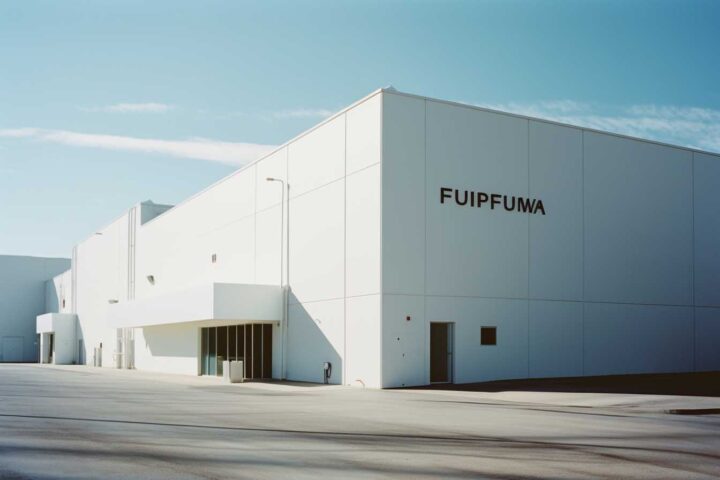When we’re looking to protect our homes, we often wonder how insurers decide on the price of our premiums. It’s not just a random figure; there’s a method to the madness. In this article, we’ll dive into the factors that influence how home insurance premiums are calculated for listed buildings.
Understanding the ins and outs of insurance calculations can save us a pretty penny. We’ll explore the role of property value, location, and risk factors that insurers consider. By the end of this read, you’ll have a clearer picture of why your listed home insurance premium costs what it does.
Factors that Influence Listed Home Insurance Premiums
When you’re trying to understand the cost of your home insurance premiums, it’s important to consider the many factors that insurers weigh. Each of these components plays a pivotal role in the final figure you’re quoted.
Construction Materials and Age
Listed buildings are often centuries old with historical significance, which means they may require specialised materials and skilled labour for repairs. These factors can drive up the cost of insurance, as the risk of damage to such unique properties is higher and the cost of restoring them is steeper.
Location and Local Threats
Where your listed building is situated has a significant impact as well. Insurers look closely at local crime rates, potential for flooding, and even the likelihood of subsidence, which varies greatly from area to area—and can affect the likelihood of a claim.
- Proximity to water bodies increases flood risk.
- High crime areas could mean a higher chance of theft claims.
- Geological factors may contribute to subsidence risks.
Security Measures and Claims History
Implementing robust security measures can lower premiums, while a history of previous claims can indicate a higher risk, leading to higher costs.
- Security features like alarms and locks can be beneficial.
- A clean claims history may result in more favourable premiums.
Access for Emergency Services
Ease of access for emergency vehicles and services can influence your premiums. If your home is difficult to reach, it may take longer to address any issues, increasing the potential for damage and, consequently, insurance costs.
The Role of Property Value in Premium Calculation
When considering home insurance for listed buildings, the property value is a significant factor in determining the insurance premium. Essentially, the higher the value of the property, the more it’ll likely cost to insure. This is because a more valuable property generally equates to a higher potential payout in the event of a claim, reflecting greater financial risk for the insurer.
Insurers evaluate the value of listed buildings meticulously. Not only does this include the market value but also the rebuild costs which account for the unique architectural features and historical significance that these buildings possess. The rebuild cost often exceeds the market value due to the specialised craftsmanship required and the rare materials that must be used to adhere to heritage preservation standards.
To accurately assess the value of a listed property, insurers may ask for a professional valuation. This detailed assessment can consider various aspects:
- Historical importance
- Architectural features
- Replacement costs of period-specific materials
Given their nature, listed buildings might also be susceptible to restrictions that can influence repair and rebuild processes. These restrictions can affect the turnaround time and cost, subsequently influencing the insurance premium.
By understanding these nuances around property value, homeowners can gain insight into how insurers arrive at the quoted premiums for listed building insurance. It’s clear that the inherent characteristics of these properties demand a tailored approach to insurance, where property value plays an integral role in premium calculation.
The Influence of Location on Insurance Premiums
When delving into how insurance premiums for listed buildings are calculated, we must consider the pivotal role of location. The whereabouts of a property can significantly affect the cost of insuring it for several reasons.
Local Crime Rates: High crime areas often see increased insurance premiums. Insurers regard these zones as high-risk due to a greater chance of theft, vandalism, and malicious damages. So, if a listed building is situated in an area with elevated crime statistics, this factor will be reflected in the insurance pricing.
Risks of Natural Disasters: Natural threats such as flooding, earthquakes, or subsidence are closely evaluated. Properties in flood-prone zones or fault lines may face steeper insurance costs. These environmental factors pose a considerable threat to the structural integrity of listed buildings, making them more challenging and expensive to restore.
Proximity to Fire Stations: How close a listed building is to emergency services, particularly fire stations, can influence premiums. Easy access to emergency services can mitigate risks, potentially leading to more favourable insurance costs.
Local Building Regulations: Listed buildings often fall under stringent local conservation regulations which can impact restoration costs. If local rules stipulate the use of specific, high-cost materials or techniques, insurers will likely increase premiums to cover these potential expenses.
As we explore these location-based factors, it’s evident that where a listed building stands plays a central role in the insurers’ risk assessment process. Knowing how each of these elements contributes to the cost can help us understand the nuances of insurance premium calculations for listed properties.
Risk Factors Considered by Insurers
When insurers set out to calculate premiums for listed home insurance, they consider a multitude of risk factors. It’s vital to understand that the nature of these listed buildings often implies a greater risk from an insurer’s perspective, which in turn affects the premium.
Historical Significance and Replacement Costs stand out amongst these factors. Listed buildings are often of significant historical value, making them irreplaceable in the real sense. Therefore, the costs associated with repairing or rebuilding following damage are considerably higher, reflecting in the insurance costs.
Specialist Materials and Techniques required for the repair or restoration of a listed building also play a crucial part. The need for specialist craftsmen and authentic materials that comply with conservation guidelines can drastically increase the cost.
Furthermore, the use of Technological Measures for prevention and mitigation of risks is scrutinised. For instance, installing state-of-the-art fire detection systems or using specific materials to prevent water damage can alter the risk profile of the building.
Finally, Legal and Liability Issues also come under consideration. This encompasses potential legal costs associated with planning permissions, conservation restrictions, or liability to the public if a part of the property poses a risk due to its historical construction. Each of these can significantly impact the premium because they carry financial risk.
Understanding these risk factors is crucial as they directly influence the cost. Awareness allows us to better navigate the ins and outs of insuring a listed building, ensuring the treasure from our past is secure for the future.
Understanding the Calculation of Listed Home Insurance Premiums
When it comes to insuring a listed building, understanding the nuances of how premiums are calculated is paramount. Insurance companies embark on a detailed analysis, factoring in various elements to determine the level of risk and subsequently, the cost of the premium.
Historical Significance and Replacement Costs
One of the primary considerations is the historical significance of a listed building. The capacity to replace or repair using original materials and methods directly impacts the premium.
- Authenticity is essential; using period-correct materials and skilled craftsmanship can significantly increase costs.
- Insurers often require a detailed valuation to assess potential replacement or repair expenses accurately.
Specialist Materials and Techniques
To preserve the unique character of listed buildings, insurers consider the availability and cost of specialist materials and techniques necessary for restoration.
- Thatched roofs, lime plaster, or oak beams often entail higher prices and specialised labour.
- Building regulations could necessitate additional, unexpected expenses during restoration work.
Technological Measures for Risk Prevention
Investing in modern technologies to prevent risks like fire or theft plays a critical role in insurance calculations.
- Smoke detectors, security systems, and fire suppression technologies may lower premiums.
- However, integrating these systems sympathetically without altering the building’s character or structure is essential.
Legal and Liability Issues
Legal responsibilities such as public access and easements can affect insurance calculations due to potential liability concerns.
- Restrictions on modifications or repairs that affect the building’s historical aspects may lead to higher costs and insurance premiums.
- Liability insurance becomes significantly important if the property is accessed by the public.
By carefully considering these factors, insurers can compute a home insurance premium that reflects the true cost of protecting a listed property. While premiums for listed buildings are often higher, understanding these contributing factors helps us realise the intricate balance between preserving history and managing risks effectively.
Conclusion
We’ve explored the intricate tapestry of factors that shape home insurance premiums for listed buildings. Grasping these elements is vital for us as homeowners to ensure our premiums reflect the unique characteristics and risks of our cherished properties. Armed with this knowledge we can approach insurance with confidence understanding that each detail from historical value to modern security measures plays a part in safeguarding the legacy of our homes. Remember it’s not just about finding a policy—it’s about finding the right coverage that honours the distinctiveness of our listed buildings.









